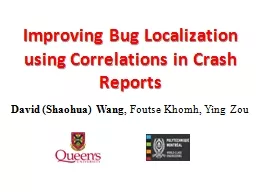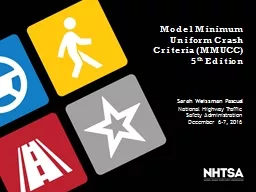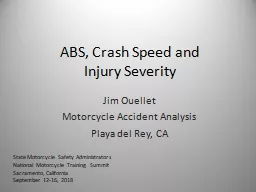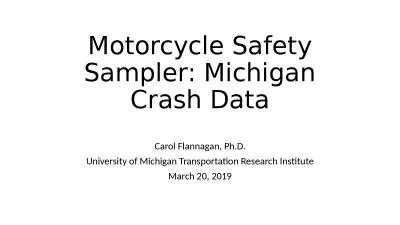PPT-Summary of Michigan Motorcyclist Crash Data
Author : danika-pritchard | Published Date : 2018-02-16
with focus on the five year periods prior to and after allrider helmet law repeal Presentation prepared by Dan Petterson EdD April 2017 Copyright 2017 SMARTER 1
Presentation Embed Code
Download Presentation
Download Presentation The PPT/PDF document "Summary of Michigan Motorcyclist Crash D..." is the property of its rightful owner. Permission is granted to download and print the materials on this website for personal, non-commercial use only, and to display it on your personal computer provided you do not modify the materials and that you retain all copyright notices contained in the materials. By downloading content from our website, you accept the terms of this agreement.
Summary of Michigan Motorcyclist Crash Data: Transcript
Download Rules Of Document
"Summary of Michigan Motorcyclist Crash Data"The content belongs to its owner. You may download and print it for personal use, without modification, and keep all copyright notices. By downloading, you agree to these terms.
Related Documents













![[READ]-Fortran Crash Course + Hacking + Android Crash Course + Python Crash Course + XML](https://thumbs.docslides.com/972403/read-fortran-crash-course-hacking-android-crash-course-python-crash-course-xml-crash-course-hacking-xml-python-android-book-2.jpg)
